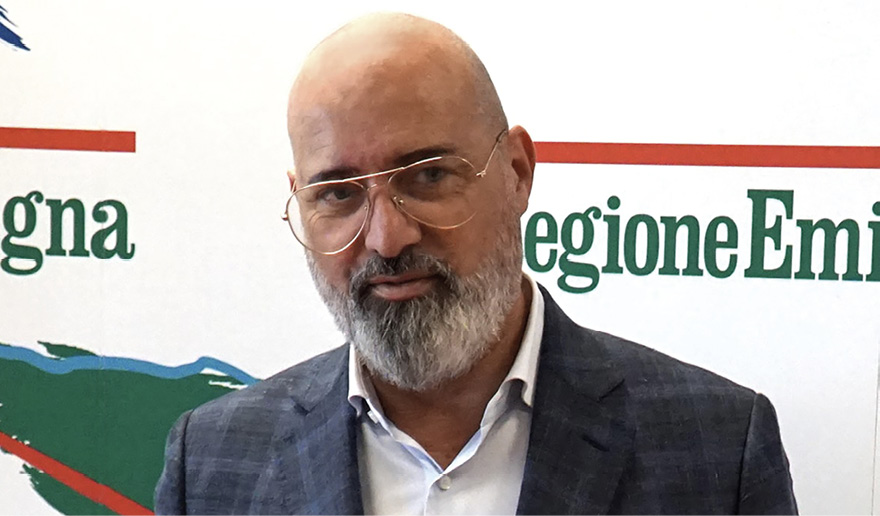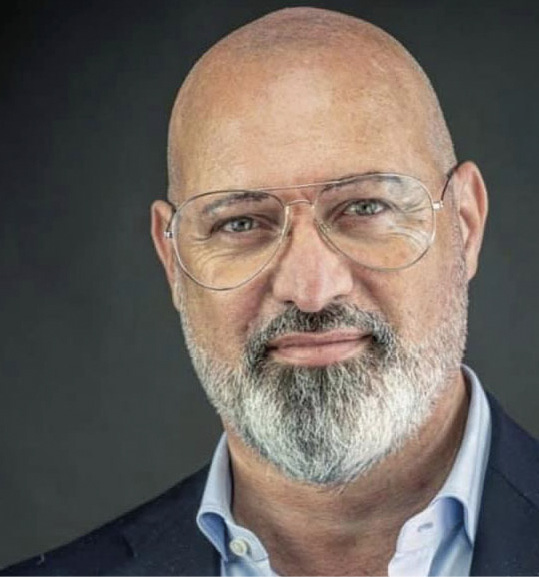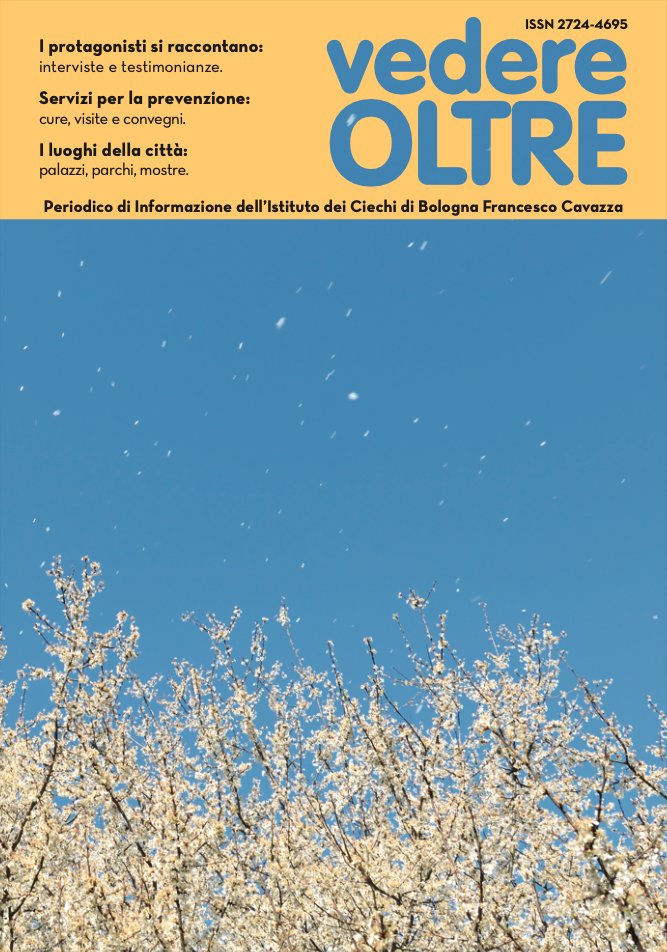Since you were re-elected as the lead of the Emilia-Romagna region, everything has happened from COVID to war in the heart of Europe. Nevertheless, the reaction of the territory’s institutions has always been responsive. Where does this ability come from to deal with extraordinary crises and to react in a timely manner, to the point of laying standards later adopted at the national level?
For the past two years, we have been living in a permanent state of emergency. First there was COVID: an event of such proportions of which we still have not grasped the extent. Then there is the war in Ukraine: honestly, I never would have imagined that we would experience the invasion of a sovereign state in the middle of Europe, an unjustifiable action by Russia, with a new burden of pain and the twisted fate of millions of Ukrainian citizens. Together with the energy crisis, with large utility bills for families, businesses, and the challenges for the third sector. In the face of crises of this magnitude, it is necessary to maintain a sense of reality and face problems with the utmost sense of responsibility. Those who lead an institution cannot afford not to. In Emilia-Romagna this effort is facilitated by the fact that we are used to working well together, especially during difficult times. The experience of the 2012 earthquake has shown us this. More than 14 billion euros of damage, entire economic sectors at risk, housing and artistic assets at risk of disappearing forever: ten years later, the reconstruction is 95 percent complete, and the impacted areas have performed better economically than before the earthquake. This is to everyone’s credit and to the ability, all of Emilia-Romagna’s, to put aside individual interests and let those community interests prevail from a perspective of solidarity and inclusiveness. It is the great strength of this land, a tremendous help and pride for the leadership.

The invasion of Ukraine has resulted in a massive humanitarian crisis. Emilia-Romagna immediately stood out among the Italian regions for immediately welcoming the largest number of refugees. How should and can the next phase of intake be handled?
Emilia-Romagna has a great tradition of hospitality and solidarity. We know what it means to be in need. Many of our grandparents were forced to emigrate after the war because this region was among the poorest in Europe, and we will never forget the aid and support we received following the earthquake. About a quarter of the refugees fleeing the bombs have arrived in this region, even though just over 6 percent of the Italian population lives here. A large segment being women and children. I hope these numbers will realign, but, in the meantime, we are not backing down. For a fitting response, past the first and more emotional phase, proper organization is needed: we must support the many families who are welcoming refugees - a generosity that moved me in numbers and ways - as well as the third-sector associations that have been active since the beginning. The school placements of minors should be regulated, with the support of specialists, interpreters, and mediators. Finally, we are thinking about labour. Thanks to the Pact for Labour and Climate, we have opened a discussion table with social stakeholders to ensure welcome and compliance with laws and labour agreements for those who would find employment for the best possible integration. Many of them escaped with nothing in their hands but their diploma or degree: work is dignity, we want to help them even in this sense.

The funds from the PNRR (national recovery and resilience plan) have in part been allocated. In light of the events in Ukraine, the awareness of the reasons and needs that were the source of these funds seems to be fading. Do they remain the expression of an emergency rationale or do they represent opportunities for structural transformation of some worn-out or deficient arrangements?
Let’s be clear. The PNRR is an extraordinary and unique opportunity which will not happen a second time. Europe in the past has shown itself to be far removed from the needs of citizens, but this is not the case. On the contrary. We will never again have such a large amount of funds, which will have to be used to make up for the historical gaps that Italy faces compared to the more advanced areas of the continent. Resources that need to be spent well and quickly, which is why Emilia-Romagna has already put down on paper most of the projects we want to fund: strengthening public health and community care, new schools, and kindergartens to cut down waiting lists, gender policies, green and digital transition, securing the land, investing in new technologies for businesses and the public, research, and innovation. Already 230 local governments and involved entities own projects for nearly 4 billion euros already allocated to Emilia-Romagna. I am convinced of two things: on the one hand, the need for the government to involve local governments, otherwise it will not be able to pull so many investments and projects on its own. At the same time, the responsibility of those who lead institutions does not elude me: like the entire political class to which I belong, I will be judged first by the outcome of this extraordinary Marshall Plan made in Europe. Of course, the war in Ukraine may lead to changes and adjustments. In particular, one which I have been talking about for a few weeks: an energy recovery plan, enabling Italy to become more independent in terms of energy production.
For a number of years, our magazine has been questioning the role and relationship between the state, local governments and private entities in the field of welfare, in light of the gradual drying up of financial flows dictated by macroeconomic reasons. The Emilia-Romagna region has always relied on public-private collaboration in view of the industrial and commercial excellence in its territory. Is this a two-way relationship that is destined to grow stronger, or must there be exclusive competencies that each party cannot delegate to the other?
The private social sector is an asset to our area. Reality, skills, professionalism, and humanity with which we complement the very high number of services offered daily in Emilia-Romania. In this sense, there is an excellent relationship between the public and private sectors in our region, both in healthcare and welfare. The roles are clear: the private sector participates by sharing our goals of inclusion and development, but the leadership of these policies remains 100 percent public. There is no contradiction between these two statements. On the contrary. I see a positive dialogue that is bearing excellent fruit and still has a lot of potential to explore considering an aging society that will increasingly require forms of personal care.
Under the executive program of your 2020-2025 term, will the needs of persons with disabilities be adequately satisfied with ad hoc resources?
We further increased the Regional Fund for Non-Self-Sufficiency: more than 500 million euros of which 55 from the national funds. It is the highest budget in our country because we want to strengthen and increase the quality of services, increase support for caregivers and people’s autonomy in independent living and Dopo di Noi (After Us) projects. More than a third is invested in home, day, and residential services for persons with disabilities, with annual spending nearing 170 million euros. Each year more than 19,000 people with severe and very severe disabilities are assisted in Emilia-Romagna through the network of social and health services for adults. Of these, more than 16,000 receive assistance through attendance at socio-occupational or socio-rehabilitative day care centres (5,000 people), the granting of care allowance (2,400 people), and home care or other services (8,600 people). We are also very active concerning the breaking down of architectural barriers. More than 700 interventions and works, worth 13 million euros, have been carried out since 2015, including the installation of elevators, stair lifts and other works to upgrade apartments to ensure that even the most vulnerable can use them as comfortably and conveniently as possible. Added to this is 30 million in private building interventions. Of course, we are aware that the resources available to Regions and Local Authorities for interventions for persons with disabilities are still insufficient to cover all needs, which the pandemic has further exacerbated, and we are counting on the PNRR to obtain new funding. We have a very good relationship with associations and organizations in the disability community: you will always find an open door and a willingness to listen and discuss.
Finally, if you had to define a person from Emilia-Romagna, what word would come to mind?
Two words. Work, because no one has ever given us anything for free, and everything we have today we have worked hard for, rolling up our sleeves. And solidarity. Because here on this land we know the value of well-being, but we are not happy until those around us are happy.





.png)